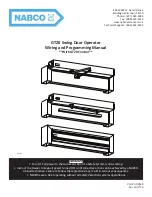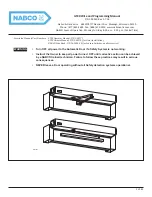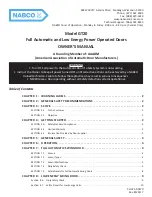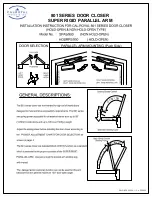
© 2016 Nelson Stud Welding, Inc.
Page 15
All Rights Reserved.
January 2016
Part No. 729-110-043 Rev. 1.02
6
Maintenance of Stud Welding System
A majority of the maintenance of a stud welding system is in:
1
Stud Welding Gun
2
Welding Cable / Control Cable
3
Power Control Unit
6.1
Stud Welding Gun
The weld tool carries out most of the welding functions and should be periodically (at least every 3
months) disassembled and cleaned. Special attention should be given to the spring mechanism.
This shaft must be absolutely free with no binding inside the gun and there should be no contact
between the stud and the spark shield. Never lubricate the spring mechanism. It should be cleaned
with a dry cleaner such as electrical contact cleaner. Caution should also be exercised when
reassembling the gun to be certain not to pinch wires or the weld cable. This could cause erratic
welding problems which are usually difficult to isolate.
6.2
Welding Cable / Control Cable
When checking cables for continuity, it is important to slightly pull on all the connectors so that if
there is a break, the wires will be pulled apart. The continuity check can be performed with a
standard Ohm meter. All cables: ground, control and the weld cables should be periodically
inspected.
6.3
Power Control Unit
The power control unit contains electronic control boards. Normally, these items do not require
maintenance. However, in harsh environments, particularly those with grinding or sanding, metallic
dust can enter the welder. This conductive metallic dust can cause unexplained problems with the
welding system. Periodically removing the power control unit cover and blowing out the power
control unit is a good idea. Frequency will vary depending on the environment. Always disconnect
power before opening any power control unit. CD units will continue to store energy after they
have been unplugged. To ensure all energy is discharged, wait at least one minute before removing
cover and servicing the power control unit. Use voltmeter to check voltage between (+) & (-) grid
for 0 Volts.
















































